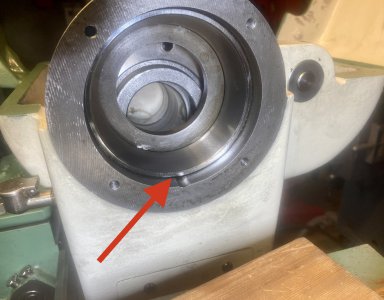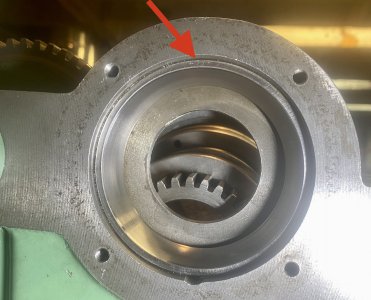I’m wrapping up an overhaul of a Sheldon EM-56-P lathe and hit a snag with the spindle. I was planning on not replacing the tapered roller spindle bearings that it came with as they still feel and sound good to me. But I just discovered that the bearings appear to have been installed incorrectly in that the hand engraved markings on the outer races are not aligned (see pics - arrows point to engravings). In fact they are 180-degrees off, which I understand would maximize the spindle runout. I’ve had the lathe running in the current configuration and runout at the spindle is around half a thou, but I suspect it should be better.
My questions:
- Am I assessing the situation correctly?
- Is there a recommended method to pull the outer bearing race without damaging it? I only need to pull one and reinstall it correctly.
- Should I just live with it for now and not risk damaging the bearings until I’m ready to replace them?
Thanks!
Front bearing:

Rear bearing:

My questions:
- Am I assessing the situation correctly?
- Is there a recommended method to pull the outer bearing race without damaging it? I only need to pull one and reinstall it correctly.
- Should I just live with it for now and not risk damaging the bearings until I’m ready to replace them?
Thanks!
Front bearing:

Rear bearing:


